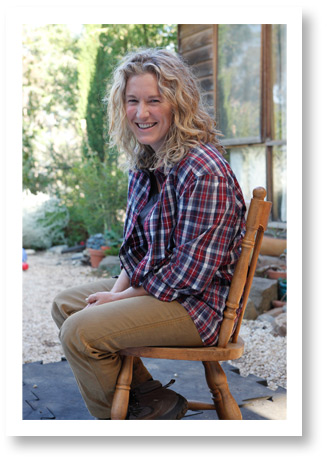While print on demand (POD) is the most heavily promoted model of book printing for self-publishers who need physical copies of their books, it’s not the only choice out there. POD has a number of advantages, but there’s another possibility that indie publishers might like to think about: offset printing.
What is offset printing?
Most physical books on the market—those printed by traditional publishers—are offset printed. Offset printing involves engaging a company that prints a large run of your books. Prices vary by company, but by using economies of scale, offset books are vastly cheaper to produce and are typically higher quality. Offset printing also offers more flexibility with formats, sizes and finishes (including spot colour, foil highlights and more). It’s a particularly good option for self-publishers of graphic novels and hardcover children’s books, who need non-standard trim sizes and coloured illustrations contained in a great quality package.
What’s the process?
First, you must send your files—cover and internals—to your chosen printer. The printer will typically send you a printed proof or email a PDF proof to ensure you’re happy with the finished result, then you’ll be ready to authorise a bulk order (500–3000 books per print run or more). Once your run is complete, the printer will deliver them to an arranged location. Then it’s up to you to send out your books to retailers. Self-publishers who print offset runs typically sell on consignment to bookstores, library suppliers, specialty retailers, through their own websites, or at public markets.
Australian firms like The Book Printing Company, Eureka Printing, Digital Print Australia, Goliath and Ligare offer offset, but one of the most affordable offset options is the UK print broker Imago, which prints in Hong Kong. Overseas freight costs are highly competitive, and with new US tariffs about to come into effect on printing suppliers in China and Hong Kong, overseas printers are actively courting non-US clients with great deals on printing and freight.
Price advantage
Let’s look at a simple example: a 5”x8” paperback of 244 pages, printed in black ink on crème paper, with a gloss cover. Printing this book on demand would cost $8.35 per unit, including GST. Printing offset with an overseas firm, the unit cost would be $4.96 (for 500 copies), $3.42 (for 1000 copies), or $2.54 (for 3000 copies). Freight cost will add 30c–$1 per copy to your order, but that’s a huge price difference overall.
What’s the downside?
It’s a big initial investment: for 3000 copies of the book described above, with freight included, you’re paying approximately $10,000 right off the bat. And at those quantities, you may not fit all the books in your home, so you may have to think about—and pay for—warehousing. You also have to handle all the postage and distribution to retailers, and factor in the time spent preparing orders and arranging invoices. If retailers are slow with payment, you may have to chase up invoices. The biggest question is, will you be able to sell all those books? If you have a good publishing reputation, good connections with retailers and firm chains of supply, that’s great—otherwise, you’ll end up with 3000 books sitting in your living room.
The upside
While offset printing may be a financial gamble, there are some real advantages. The book production process is extremely professional, and you’re creating a higher quality product. Your books are considerably cheaper to produce, allowing you to offer higher discounts to retailers (which usually means increased orders). Although self-distribution increases your workload, offset printing allows you to create a more flexible, responsive distribution system so you can offer returns, fulfil orders promptly, and create good community connections with retailers.
Finally—most temptingly—your profit margin for offset is higher. Using the above example, if your book retails for $20 with a retail discount of 50%, printing on demand will make you a profit of $1.65. Printing offset, with a book that costs $2.54 to produce, and adding in freight (60c), warehousing (50c) and postage (approx. $1.45 per book, via standard Aus parcel post of up to 3kg), your book costs $5.09 to create and distribute, so your profit on the same book is $4.91.
Testimonial
Claudia Rowe is a regional self-publisher of hardcover children’s books, currently printing with Imago UK/HK. Here’s what she has to say about offset printing:
‘When I set out to print my first book, I had no idea about extent, imprints, binding or what the shiny stuff on a cover was called. A generous friend-of-a-friend who worked in publishing lent me her lunch hour and decoded the mysteries of printing for me. At the end of the meeting, she gave me the business card for a printing broker based in Sydney. This broking company has since handled all my printing (now totalling 46,000 books). I can describe to them what I want in the simplest language (‘that shiny stuff’) and they will interpret the request to the printer in China, from where I receive a high-quality bound book to the exact specifications.
The process is smooth, professional and relatively fast. It is also cost-effective when ordering quantities greater than 1000. I choose recycled paper and I am assured the factory is operating ethically as the printer is a member of SMETA (Sedex Members Ethical Trade Audit). As a one-woman-band, going through a printing broker in this way has enabled me to deliver a high-quality printed product and freed me up to focus more on writing and illustrating. It’s been great!’
Claudia has included a handy video about her self-publishing experience and printing offset here. You can also find out more about offset printing by looking through this series of articles by Joel Friedlander. Happy printing and good luck!
Ellie Marney is a teacher and hybrid YA author. She lives in Victoria with her family, and her most recent book series, Circus Hearts, was published in November 2018. Find her at www.elliemarney.com or on Facebook, Twitter or Instagram.



